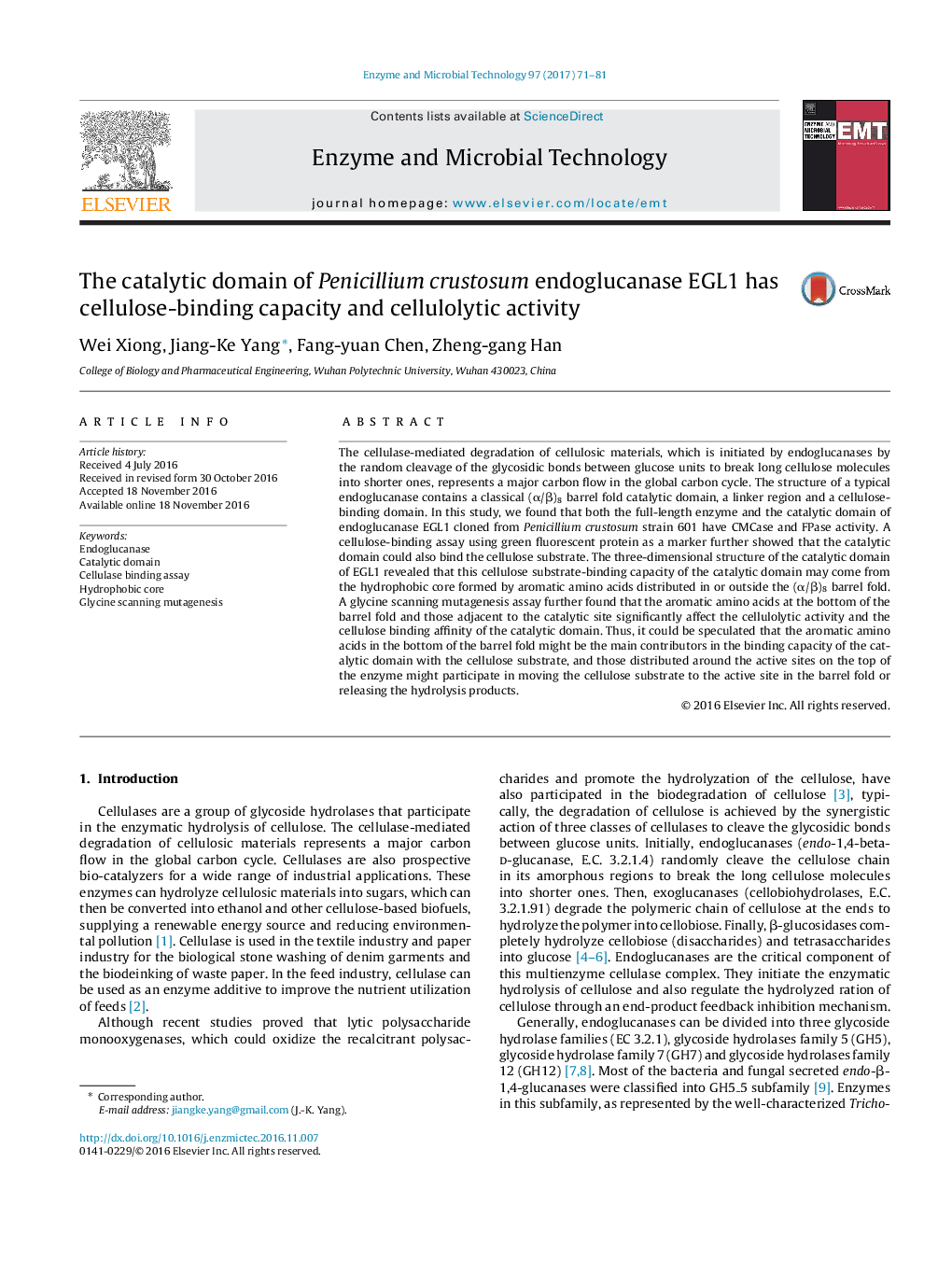| کد مقاله | کد نشریه | سال انتشار | مقاله انگلیسی | نسخه تمام متن |
|---|---|---|---|---|
| 4752884 | 1416374 | 2017 | 11 صفحه PDF | دانلود رایگان |

- The catalytic domain of EGL1 along has cellulase activity.
- The catalytic domain of EGL1 along has cellulose binding capacity.
- Two aromatic amino acids in active center have contributed to the cellulase activity.
- Two aromatic amino acids in the bottom side have also contributed to the cellulase activity.
- A model for catalytic domain contacted with cellulose was speculated.
The cellulase-mediated degradation of cellulosic materials, which is initiated by endoglucanases by the random cleavage of the glycosidic bonds between glucose units to break long cellulose molecules into shorter ones, represents a major carbon flow in the global carbon cycle. The structure of a typical endoglucanase contains a classical (α/β)8 barrel fold catalytic domain, a linker region and a cellulose-binding domain. In this study, we found that both the full-length enzyme and the catalytic domain of endoglucanase EGL1 cloned from Penicillium crustosum strain 601 have CMCase and FPase activity. A cellulose-binding assay using green fluorescent protein as a marker further showed that the catalytic domain could also bind the cellulose substrate. The three-dimensional structure of the catalytic domain of EGL1 revealed that this cellulose substrate-binding capacity of the catalytic domain may come from the hydrophobic core formed by aromatic amino acids distributed in or outside the (α/β)8 barrel fold. A glycine scanning mutagenesis assay further found that the aromatic amino acids at the bottom of the barrel fold and those adjacent to the catalytic site significantly affect the cellulolytic activity and the cellulose binding affinity of the catalytic domain. Thus, it could be speculated that the aromatic amino acids in the bottom of the barrel fold might be the main contributors in the binding capacity of the catalytic domain with the cellulose substrate, and those distributed around the active sites on the top of the enzyme might participate in moving the cellulose substrate to the active site in the barrel fold or releasing the hydrolysis products.
171
Journal: Enzyme and Microbial Technology - Volume 97, February 2017, Pages 71-81